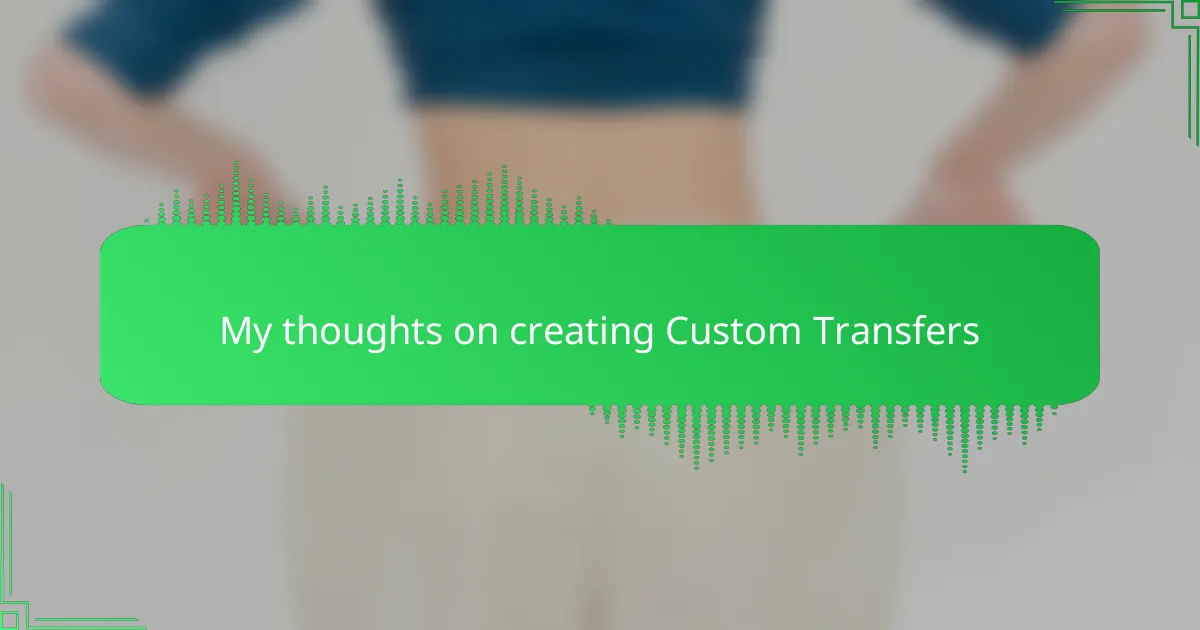Key takeaways
- Understanding different types of custom transfers (HTV, screen printed, digital, etc.) is essential for achieving quality results.
- Custom transfers enable vibrant colors and intricate details, enhancing t-shirt design significantly compared to traditional methods.
- Common mistakes include mismatching transfer paper with fabric and neglecting design testing, which can lead to poor outcomes.
- Paying attention to detail, using appropriate materials, and experimenting can result in successful and professional-looking designs.
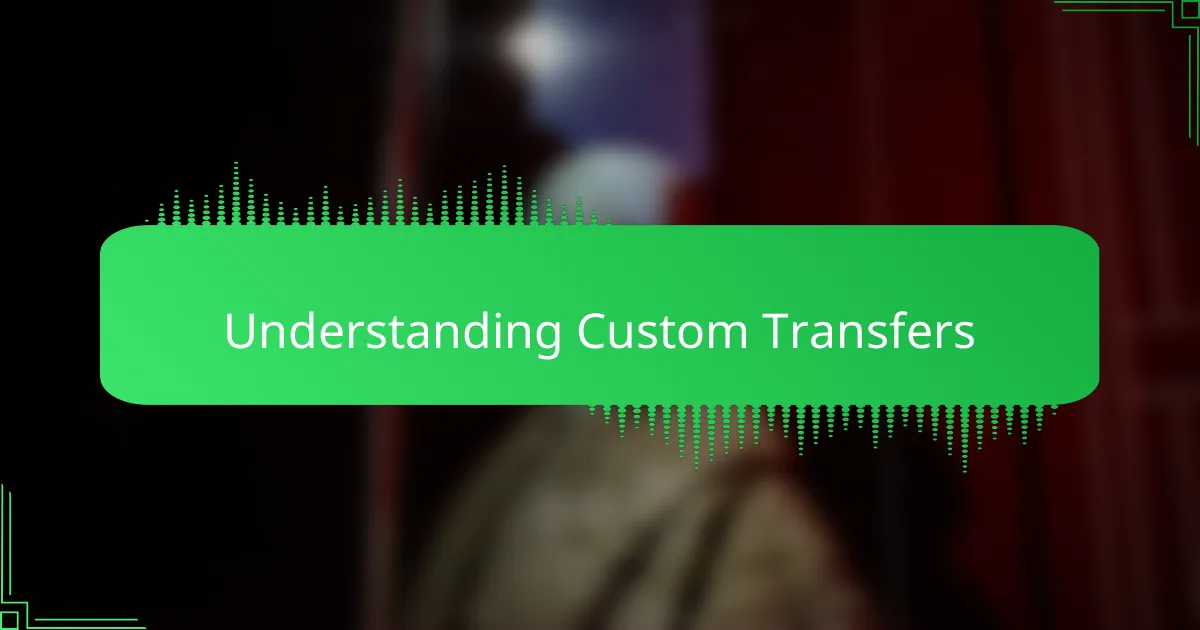
Understanding Custom Transfers
Creating custom transfers for t-shirts has always fascinated me because it combines precision with creativity. When I first started, I underestimated how crucial understanding the transfer material and printing process was. A well-made custom transfer not only holds the design’s vibrancy but also ensures durability after multiple washes—a detail I’ve learned to appreciate deeply over time.
From my experience, grasping the types of transfers available is key to making informed choices. Here’s what I usually consider when working with custom transfers:
- Heat Transfer Vinyl (HTV): Offers great durability and a soft feel; ideal for smaller or simple designs.
- Screen Printed Transfers: Best for bulk printing, providing rich colors but requiring more setup.
- Digital Transfers: Perfect for complex, multi-colored designs with photo-quality details.
- Sublimation Transfers: Work only on polyester fabrics but produce vibrant, permanent images that won’t crack.
- Plastisol Transfers: Similar to screen printing but done on transfer sheets, excellent for detailed designs.
By knowing these options, I’ve been able to tailor my designs better and avoid costly mistakes, especially when matching transfers to fabric types. It’s a bit like solving a puzzle, and that challenge is part of what makes custom transfers so rewarding for me.

Benefits of Custom Transfers for T Shirts
Custom transfers have truly changed the way I approach t-shirt design. They give me the freedom to experiment with vibrant colors and intricate details that simply wouldn’t hold up with traditional methods. Plus, I’ve noticed that using custom transfers saves a lot of time during production, allowing me to meet tight deadlines without sacrificing quality.
| Feature | Custom Transfers | Screen Printing |
|---|---|---|
| Detail Reproduction | High precision with fine details and gradients | Less effective for complex designs |
| Production Speed | Faster turnaround times | Slower, due to setup requirements |
| Cost for Small Runs | More cost-effective for limited quantities | More expensive for small batches |
| Durability | Good, but depends on transfer quality | Generally more durable over time |
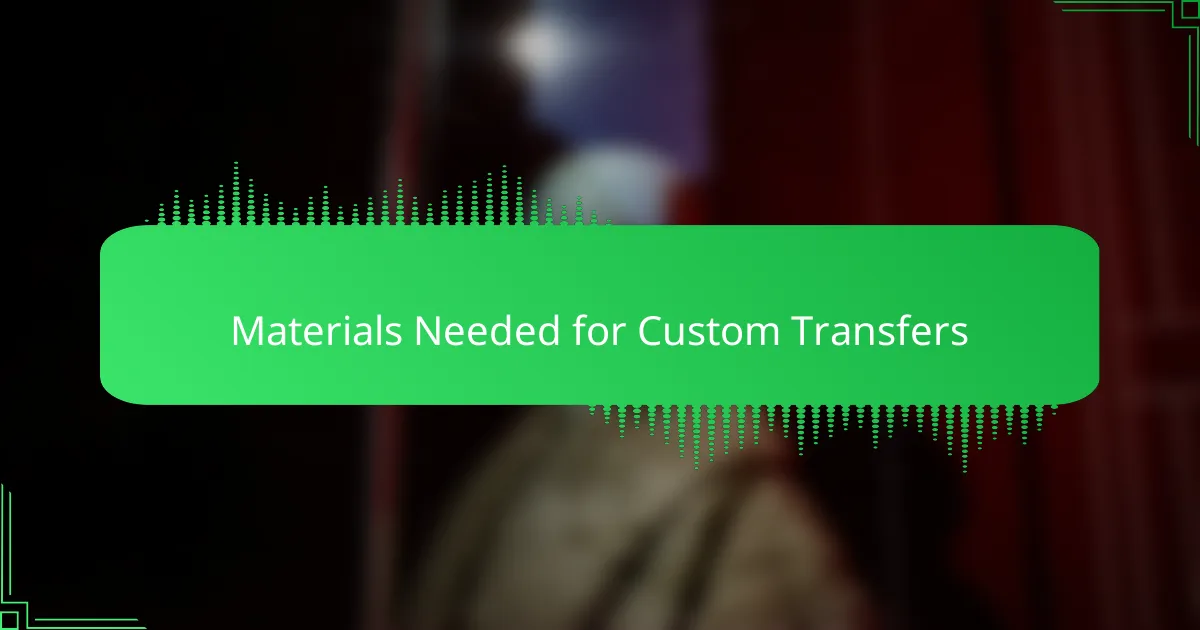
Materials Needed for Custom Transfers
Materials Needed for Custom Transfers often surprise beginners with their simplicity and effectiveness. From my experience, having the right materials not only makes the process smoother but also boosts your confidence in creating standout designs. I remember my first project; using quality transfer paper made all the difference—colors popped, and the transfer adhered perfectly.
| Material | Purpose/Description |
|---|---|
| Transfer Paper | Captures and transfers the design onto fabric; essential for crisp prints. |
| Heat Press or Iron | Applies heat and pressure to bond the design onto the t-shirt. |
| Printer (Inkjet or Laser) | Prints the design onto transfer paper; choice affects transfer type and quality. |
| T-shirt (Cotton or Cotton Blend) | Best fabrics for transfer adhesion and vibrant prints. |
| Protective Sheet or Parchment Paper | Prevents damage to the design and equipment during heat application. |
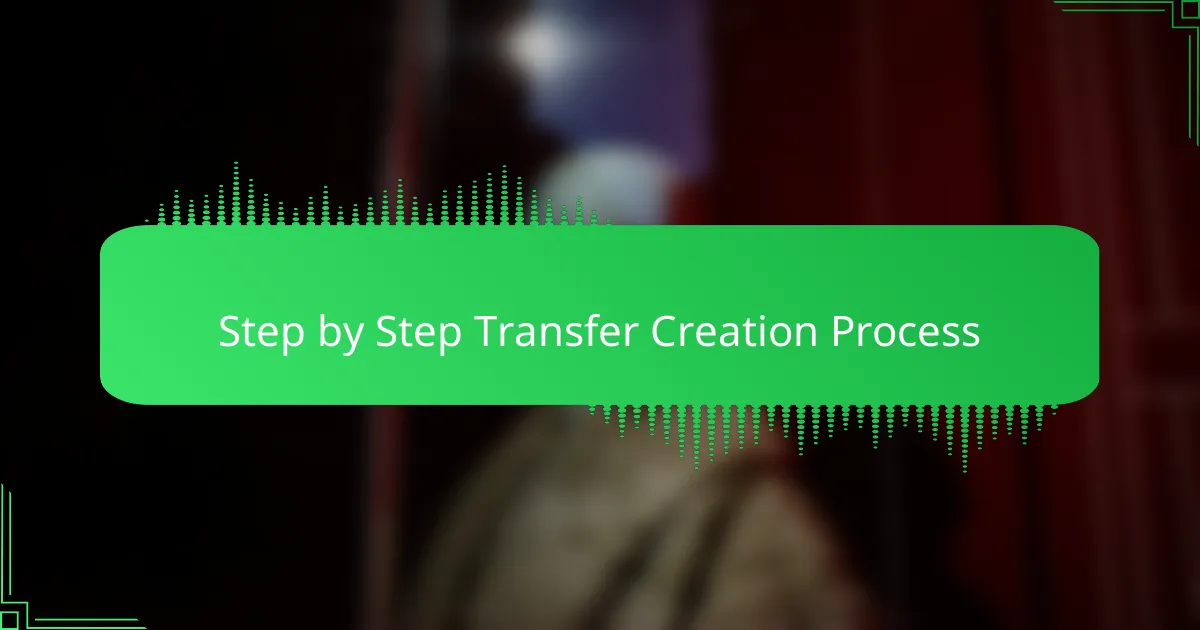
Step by Step Transfer Creation Process
Sure! Please provide me with the {subheading} and {detail} you want me to include in the paragraphs and bullet list.

Common Mistakes to Avoid
One common pitfall I’ve encountered when creating custom transfers is rushing through the preparation phase. I remember a project where I overlooked the importance of perfectly aligning the design with the transfer paper, which led to wasted materials and a frustrating redo. Attention to detail at this stage saves time and preserves the integrity of the final product.
Another mistake I often see, especially with beginners, is using the wrong type of transfer paper for the fabric. This mismatch can cause peeling or fading after washing, which is disheartening after putting so much effort into the design. From my experience, choosing the right transfer paper tailored to your fabric type is critical for durability and quality.
- Not checking the compatibility of transfer paper with fabric
- Skipping the test print to verify color and alignment
- Using insufficient heat or pressure during transfer
- Ignoring the washing instructions for the finished t-shirt
- Designing with overly complex details that don’t translate well in transfer form

Personal Tips for Successful Transfers
When I first started creating custom transfers, I quickly realized that attention to detail is everything. Even a slight misalignment or improper heat can ruin the entire design. I recall one project where I was so eager to finish that I rushed the transfer process—only to end up with a patchy, frustrating result that really taught me patience is key.
Based on my experience, here are some tips that have helped me consistently nail successful transfers:
- Always pre-wash your t-shirts to prevent shrinkage after the transfer.
- Use a heat press rather than a household iron for even and precise heat distribution.
- Test on a small piece of fabric before committing to the final garment.
- Let the transfer cool completely before peeling the backing to avoid smudging.
- Adjust pressure and temperature settings based on the material and transfer type.
- Work in a clean, dust-free environment to keep designs crisp.
- Keep a timer handy—overheating or underheating can both spoil the transfer.
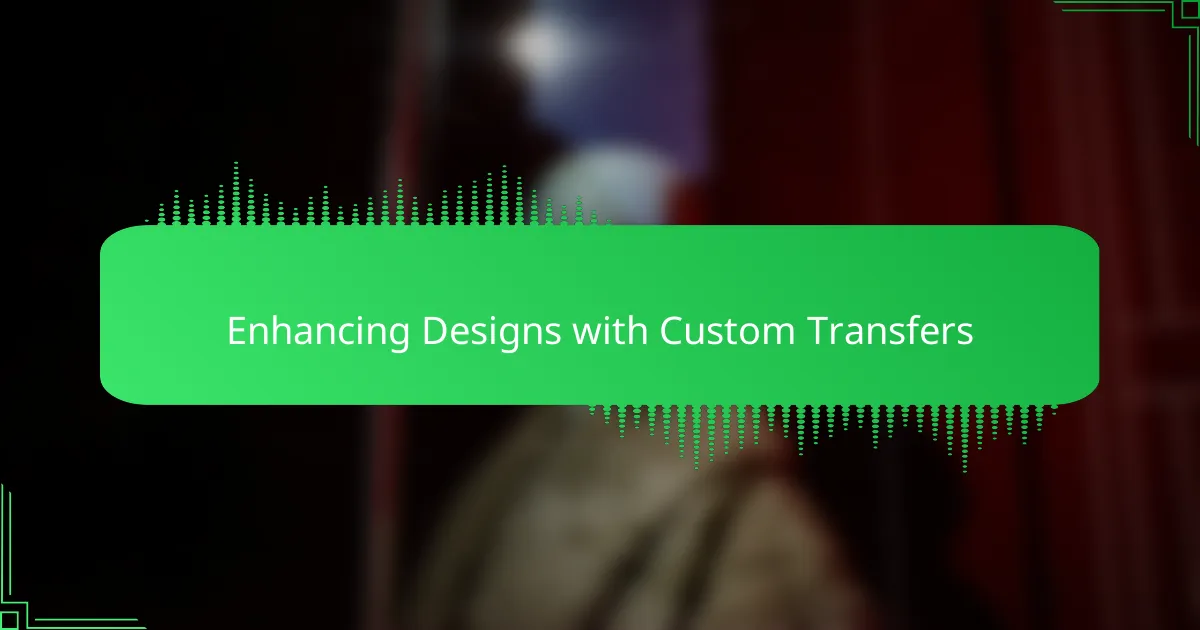
Enhancing Designs with Custom Transfers
Custom transfers have truly transformed the way I approach t-shirt design. Adding intricate details and vibrant colors that were once difficult to achieve has become effortless with this method. I remember the first time I used a custom transfer — the crispness and quality immediately elevated my design, making it feel professional and unique.
What I appreciate most is the versatility custom transfers offer. Whether I’m working on bold graphics or subtle logos, I can tailor the transfer to fit the exact vision I have. From my experience, here are some key benefits I’ve noticed:
- Produces sharp and vibrant colors that enhance overall design quality
- Allows for precise replication of complex artwork or fine details
- Offers durability, keeping designs looking fresh after multiple washes
- Provides flexibility to experiment with different materials and finishes
- Simplifies the production process, saving both time and effort
These advantages have made custom transfers my go-to technique for making designs stand out in a crowded market.
